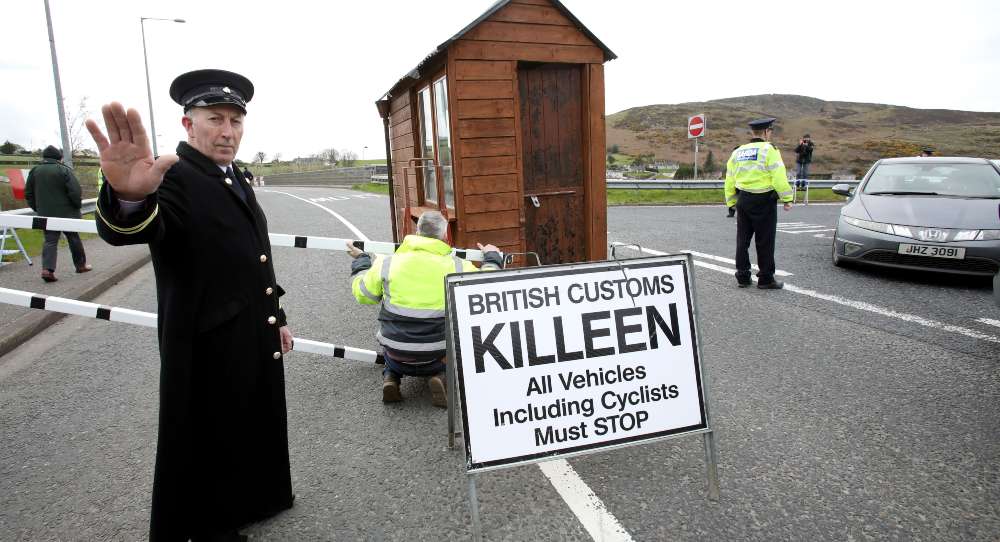Erwin Schrödinger would have understood the problem.
The Austrian physicist, whose imagination gave the world his eponymous cat, discovered how quantum mechanics enabled the same particle to exist in two different states at the same time.
As we reach the sharp end of Britain’s Brexit negotiations with the European Union, the central question can be posed in quantum-mechanics terms: Can Northern Ireland be simultaneously outside the EU Customs Union in principle, but inside it in practice?If the eventual answer is yes, then the UK is likely to leave the EU on October 31 with an agreed deal. If the answer is no, then the bumpiest of rides is not only certain but imminent.
To an outsider coming afresh to this month’s dramas in UK politics, the contrast between the narrowness of the issue and the scale of the economic crisis that could erupt makes little sense. How can it be that the precise system of regulation affecting a minority of businesses in a territory of fewer than two million people can threaten to do so much harm?
However, Northern Ireland, the territory in question, is unlike any other in Europe. Two decades ago, the terrorism that ravaged the province, perpetrated by Irish nationalists and pro-UK unionists alike, came to an end with the Good Friday Agreement in 1998. This was based on a specific, fundamental understanding: Politically, Northern Ireland would remain part of the UK as long as most of its voters wished, but economically, the province would be allowed to integrate increasingly with the Republic of Ireland. The 500-kilometer border, with its 200-plus road crossings, would effectively disappear.
The EU was at the heart of this agreement. Completely frictionless trade across the border was underpinned by the European Single Market and Customs Union. If Hong Kong was promised “one country, two systems,” the Good Friday Agreement promised, in effect, “two countries, one market.”
But after two decades—Hong Kong was handed back to China in 1997—both settlements are fraying badly.
The UK’s decision to leave the EU threatened the equilibrium that has sustained peace since 1998. Without exploring the byways of UK former prime minister Theresa May’s and Prime Minister Boris Johnson’s successive negotiations, Johnson now proposes that—subject to approval by Northern Ireland’s assembly, which hasn’t convened for more than two years—the province will remain in the single market for physical trade (as distinct from trade in services). Its farmers and manufacturers will continue to abide by EU food and product standards, safety, and other legislation for goods.
The issue of the Customs Union is altogether trickier. One of the main advantages of Brexit advanced by its proponents is that the UK will be able to strike its own trade deals with other countries, such as the United States.
But the very effect of lowering tariff and non-tariff barriers with other countries will inevitably require higher barriers between the UK and the EU. Economically, the border between the UK and the EU will no longer be frictionless. Some elements of this are unavoidable, such as the need for checks on trucks travelling across the English Channel between Dover and Calais.
But how will the barriers work on the only land border between the UK and the EU? Everyone agrees that the Irish border must remain open—but how can this be achieved? There are three logical options.
First, Northern Ireland could stay part of the Customs Union. But this would require a full-scale economic border across the Irish Sea separating the islands of Ireland and Great Britain, like that across the English Channel separating Britain and France. That would stand no chance of getting through the UK Parliament.
Second, the whole of the UK could remain part of the Customs Union for a limited time, until new technology allows cross-border checks to take place without any form of border infrastructure or intrusive surveillance that could risk destabilizing the Irish peace process. This is the so-called backstop that Theresa May negotiated, but which Parliament rejected three times, and which led to her downfall.
Third, the UK could decide not to leave the EU after all. This would solve the Irish border problem, completely, but at the cost of Johnson betraying his pledge to execute Brexit “do or die.” His premiership would crash in flames.
Hence Johnson’s latest proposal of a Schrödinger’s cat solution. The Customs Union would stay and go at the same time. Legally, Northern Ireland would leave it, but in practice, limited checks would take place at factories and farms, away from the border.
The trouble is that nobody has spelled out how this could be made to work without weighing down Northern Ireland’s exporters with prohibitive costs—which is one reason why the province’s businesses hate the idea. And there is the small matter of getting the idea approved by the other 27 member states—Ireland above all. There is no sign so far of progress there.
Maybe some new compromise can be found in the next few days. But the chances are that this particular version of Schrödinger’s cat will end up in just one state: dead, with definite rigor mortis. There will be no deal. An extension of UK membership beyond October 31, as demanded by Parliament in these circumstances, looks likely.
Meanwhile, reports of an incendiary message from an unnamed Downing Street official on October 7, threatening disruptive actions by Britain in the event of an extension, appear to reflect a power struggle at the heart of government, rather than a firm policy.
It remains to be seen whether Johnson will fight extension, reluctantly accept it, or fall on his sword.










